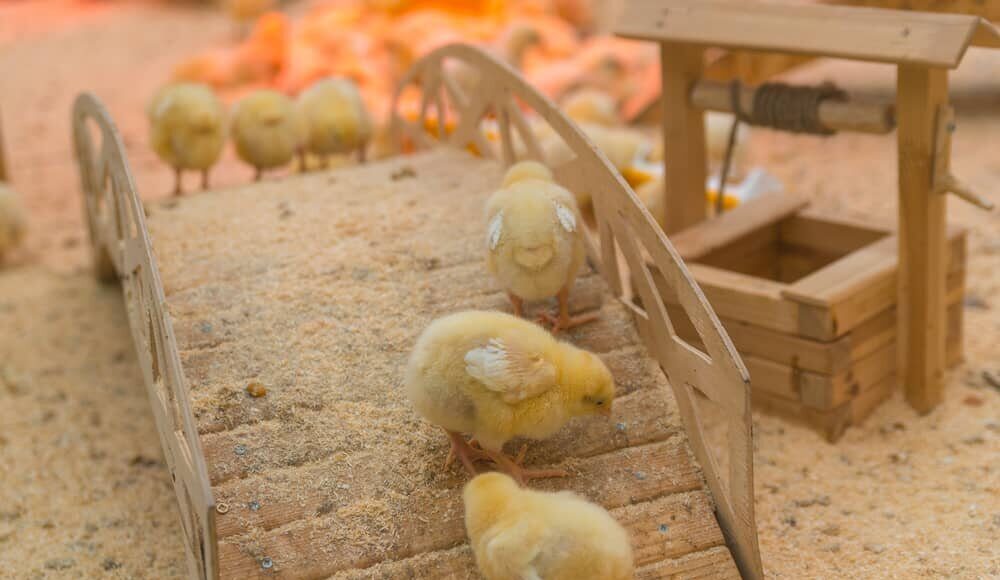Raising chicks is a delightful experience that requires attention to detail, especially when it comes to daily chick brooder maintenance. A brooder is a heated enclosure that provides a safe and nurturing environment for young chicks. Proper maintenance is crucial to ensure the health and well-being of your chicks. This article will guide you through the essential aspects of maintaining a chick brooder on a daily basis.

Why Is Brooder Maintenance Important?
Maintaining a clean and healthy brooder is vital for the growth and development of chicks. Poor conditions can lead to diseases and stress, which can hinder their growth. By ensuring proper maintenance, you create a conducive environment that promotes healthy development.
Setting Up the Brooder
Choosing the Right Brooder
The first step in daily chick brooder maintenance is selecting the right brooder. It should be spacious enough to allow the chicks to move around comfortably. A good rule of thumb is to provide at least 0.5 square feet per chick. You can find various brooder options on Hatching Time.
Temperature Control
Temperature regulation is crucial for chick survival. The brooder should be kept at a consistent temperature of 95F during the first week, gradually decreasing by 5F each week until it reaches room temperature. Use a reliable heat source like a heat lamp or brooder plate.
Daily Cleaning Routine
Removing Waste
Chicks produce a lot of waste, which can lead to ammonia buildup if not cleaned regularly. Daily removal of soiled bedding and droppings is necessary to prevent respiratory issues. Learn more about changing brooder bedding.
Replacing Bedding
Fresh bedding is essential for keeping the brooder clean and dry. Pine shavings are a popular choice, as they are absorbent and help control odors. Avoid using newspaper or cedar shavings, as they can be harmful to chicks. Discover more about eco-friendly brooder options.
Feeding and Watering
Providing Fresh Water
Chicks need constant access to fresh water. Check the waterer daily to ensure it is clean and filled. Dirty water can harbor bacteria that may cause illness. Consider using a shallow dish to prevent drowning.
Feeding Schedule
Offer high-quality chick starter feed to support their rapid growth. Ensure the feed is dry and free from mold. For tips on keeping feed dry, visit keeping feed dry.
Monitoring Chick Health
Signs of Illness
Observe your chicks daily for any signs of illness, such as lethargy, coughing, or diarrhea. Early detection is key to preventing disease spread. Consult a veterinarian if you notice any concerning symptoms.
Encouraging Activity
Chicks need stimulation to prevent boredom. Safe toys and perches can encourage natural behaviors and promote exercise. Find out more about toys for chicks.
Maintaining Brooder Safety
Preventing Overcrowding
Ensure the brooder is not overcrowded, as this can lead to stress and aggression. Adequate space helps prevent injuries and promotes healthy growth.
Securing the Brooder
Keep the brooder secure to protect chicks from predators. Use a mesh cover to provide ventilation while keeping unwanted animals out.

Frequently Asked Questions
How often should I clean the brooder?
Daily cleaning is recommended to prevent the buildup of waste and bacteria.
What temperature should the brooder be?
The brooder should start at 95F and decrease by 5F each week until room temperature is reached.
When can chicks leave the brooder?
Chicks can typically leave the brooder when they are fully feathered, around 6-8 weeks old.
For more in-depth information on setting up a brooder, visit Backyard Chickens.
This article contains affiliate links. We may earn a commission at no extra cost to you.











